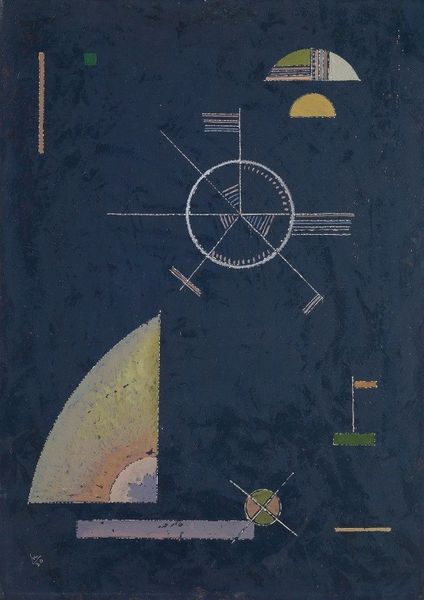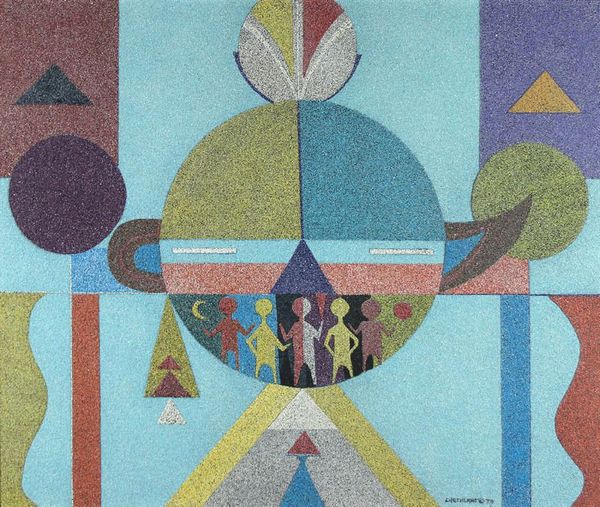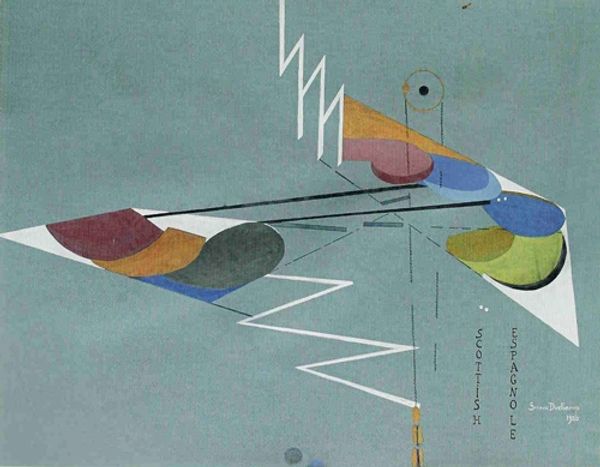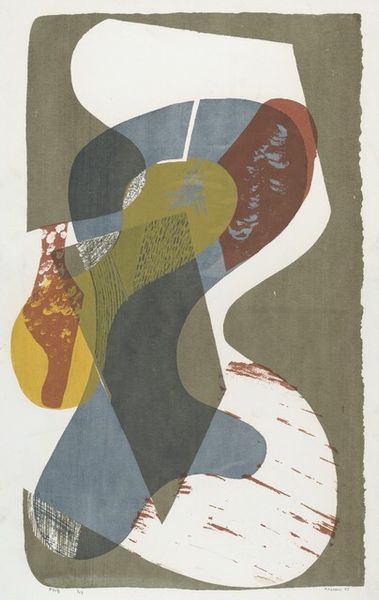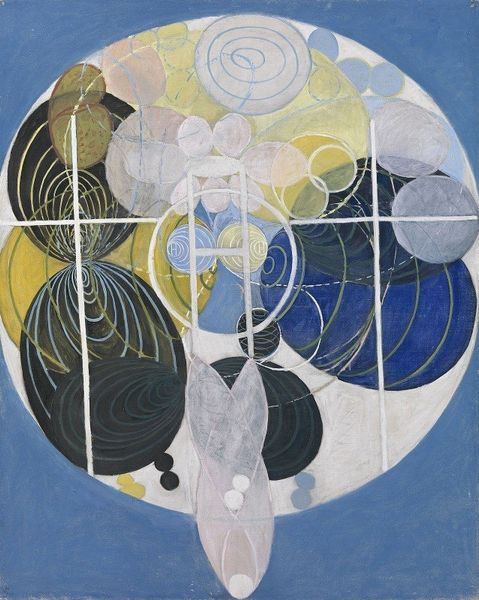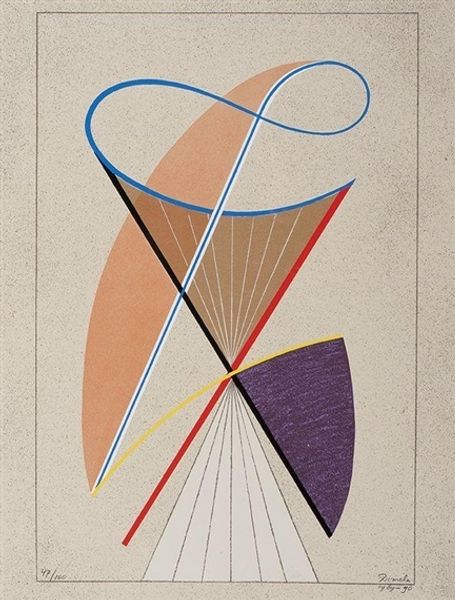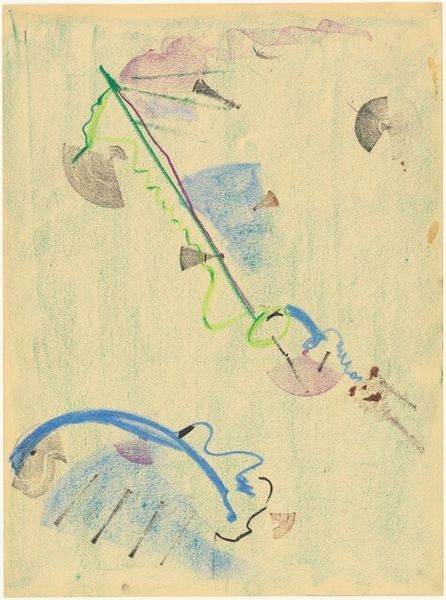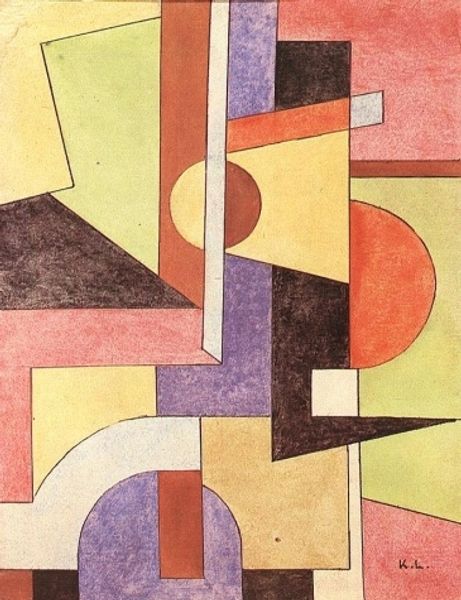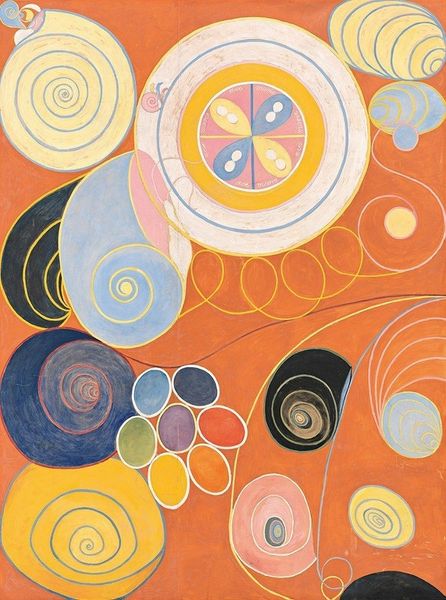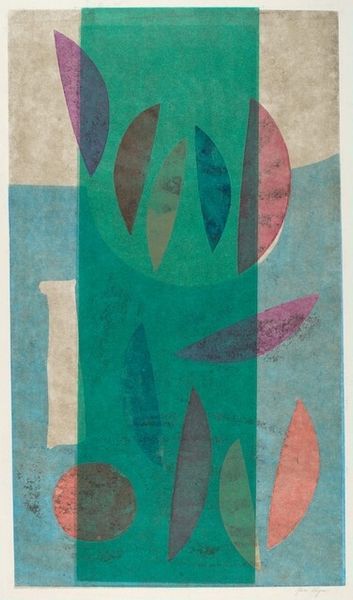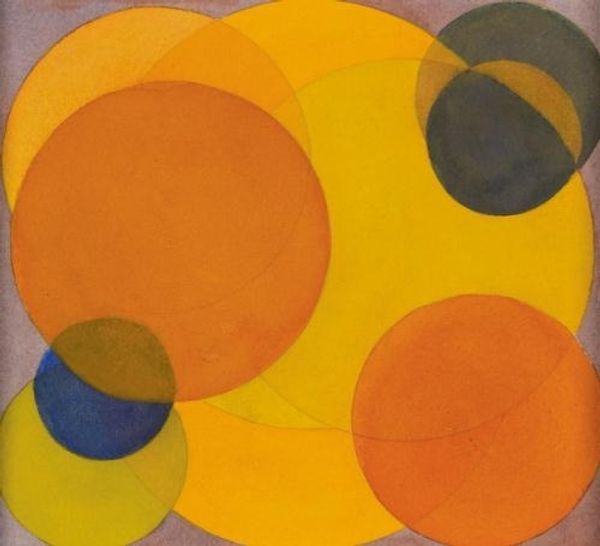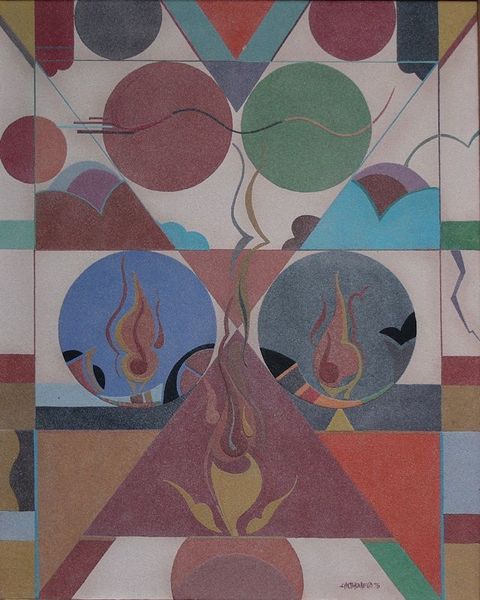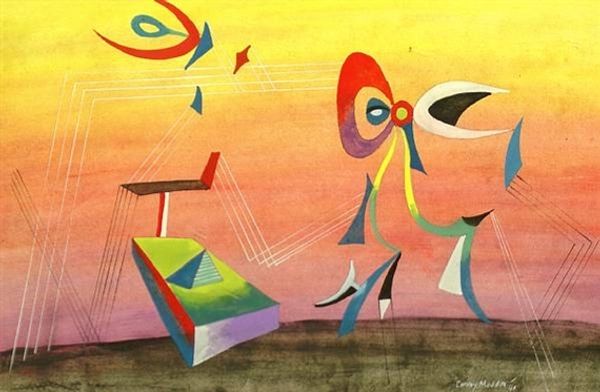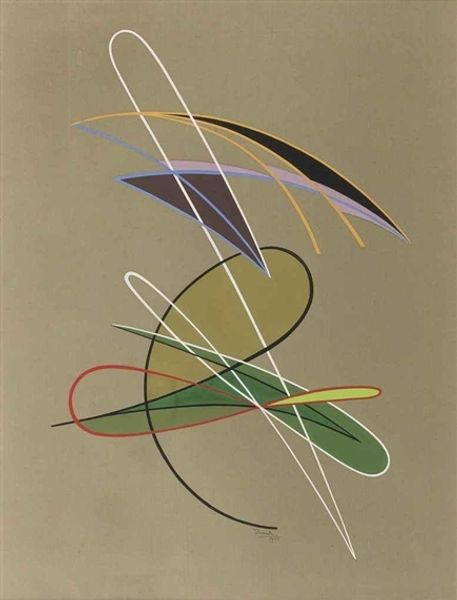
painting, watercolor
#
non-objective-art
#
painting
#
abstract
#
form
#
watercolor
#
geometric
#
geometric-abstraction
#
line
#
symbolism
#
modernism
Copyright: Public Domain: Artvee
Editor: We’re looking at "Tree of Knowledge No. 5" by Hilma af Klint, created between 1913 and 1915. It's a watercolor, and the composition strikes me as almost biological, like looking at a cell under a microscope, but also incredibly symbolic. What do you see in this piece? Curator: Indeed. It’s fascinating how af Klint uses geometric forms, like those circles and lines, not just as shapes, but as carriers of deeper meanings. Note the prominent use of dualities - light and dark, the organic shapes contrasting with hard geometry. What do these opposing forces suggest to you? Editor: Maybe the push and pull of knowledge itself, the known and unknown? Curator: Precisely! And consider the placement of those '8' symbols scattered across the upper form. They evoke a sense of infinity, mirroring the eternal quest for understanding. It’s like she’s building a visual language of the subconscious. Do you think that language is meant to be universal, or intensely personal? Editor: That's a good question! Given her spiritual interests, maybe she intended for a universal resonance. Curator: Perhaps. Af Klint's work allows us to perceive these familiar shapes and question how our own experiences imprint them with meaning, across time and cultures. Editor: I’ve never thought of abstract art in terms of cultural memory before, it's an intriguing approach. Curator: These forms aren't detached from lived experience; they're steeped in it. What begins as personal, seeks to reflect shared symbols, becoming culturally vital. Editor: This has completely shifted my perspective. I came in seeing shapes and colors, but now I recognize symbols and potential stories!
Comments
No comments
Be the first to comment and join the conversation on the ultimate creative platform.
